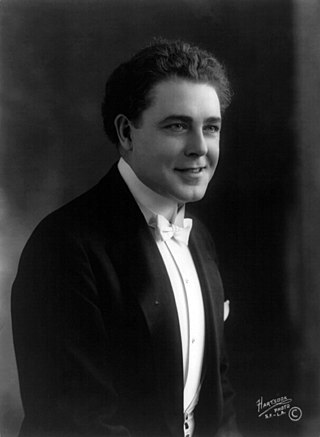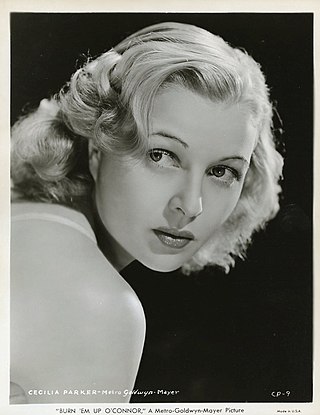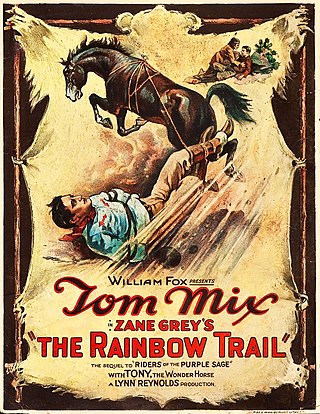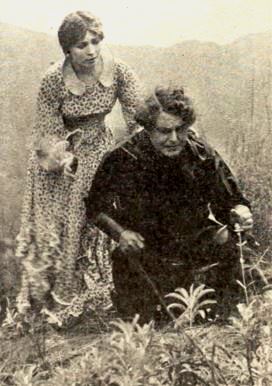
Riders of the Purple Sage is a Western novel by Zane Grey, first published by Harper & Brothers in 1912. Considered by scholars to have played a significant role in shaping the formula of the popular Western genre, the novel has been called "the most popular western novel of all time."

Frank William George Lloyd was a British-born American film director, actor, scriptwriter, and producer. He was among the founders of the Academy of Motion Picture Arts and Sciences, and was its president from 1934 to 1935.

Grace Cunard was an American actress, screenwriter and film director. During the silent era, she starred in over 100 films, wrote or co-wrote at least 44 of those productions, and directed no fewer than eight of them. In addition, she edited many of her films, including some of the shorts, serials, and features she developed in collaboration with Francis Ford. Her younger sister, Mina Cunard, was also a film actress.

William Farnum was an American actor. He was a star of American silent cinema, and he became one of the highest-paid actors during this time.

Murdock MacQuarrie was an American silent film actor and director. His name was also seen as Murdock McQuarrie.

Cecilia Parker was a Canadian-born American film actress. She was best known for portraying Marian Hardy, the sister of Andy Hardy in eleven of the Andy Hardy film series.
William Anton Gittinger, best known as William Steele, was an American actor of small roles in Westerns, particularly those of John Ford.

The Phantom Riders is a 1918 silent American Western film directed by John Ford and featuring Harry Carey. The film is considered to be lost.

The Rainbow Trail, also known as The Desert Crucible, is Western author Zane Grey's sequel to Riders of the Purple Sage. Originally published under the title The Rainbow Trail in 1915, it was re-edited and re-released in recent years as The Desert Crucible with the original manuscript that Grey submitted to publishers.

Mary Howard de Liagre was an American actress usually credited as Mary Howard.
Riders of the Purple Sage may refer to:

Riders of the Purple Sage is a 1925 American silent Western film directed by Lynn Reynolds and starring Tom Mix, Mabel Ballin, and Warner Oland. Based on the 1912 novel Riders of the Purple Sage by Zane Grey, the film is about a former Texas Ranger who pursues a corrupt lawyer who abducted his married sister and niece. His search leads him to a remote Arizona ranch and the love of a good woman.
Lassiter is an English family name. It is a habitational name from the city of Leicester. Notable people with the surname include:

Riders of the Purple Sage is a 1931 American pre-Code Western film based upon the 1912 novel by Zane Grey, directed by Hamilton MacFadden, photographed by George Schneiderman, and starring George O'Brien and Marguerite Churchill. The picture was released by the Fox Film Corporation with a running time of 58 minutes and remains the third of five screen versions. It was the first sound version. The movie was followed later the same year by a similar adaptation of the novel's sequel, The Rainbow Trail, also starring O'Brien.

Riders of the Purple Sage is a 1996 American Western television film based on the 1912 novel by Zane Grey, directed by Charles Haid, adapted by Gil Dennis, and starring Ed Harris as Lassiter and Amy Madigan as Jane Withersteen. The film aired on TNT on January 21, 1996.
Riders of the Purple Sage is a 1941 American Western film based on the 1912 novel by Zane Grey, directed by James Tinling, and starring George Montgomery as Lassiter and Mary Howard as Jane Withersteen. The picture is the fourth of five screen adaptations of Grey's novel produced across an eight-decade span.

The Rainbow Trail is a 1932 Pre-Code Western film directed by David Howard and starring George O'Brien. The picture is an adaptation of Zane Grey's novel of the same name and a sequel to the 1931 film Riders of the Purple Sage, which also stars O'Brien.

The Rainbow Trail is a lost 1918 American silent Western film directed by Frank Lloyd.

The Rainbow Trail is a 1925 American silent Western film written and directed by Lynn Reynolds. It is based on the 1915 novel The Rainbow Trail by Zane Grey. The film stars Tom Mix, Anne Cornwall, George Bancroft, Lucien Littlefield, Mark Hamilton, and Vivien Oakland. The film was released on May 24, 1925, by Fox Film Corporation.

Mary Mersch, sometimes credited as May Mersch, was an American actress active from the silent era up to 1938. She was under contract with Fox, and often worked with directors like William Farnum and Frank Lloyd.
















